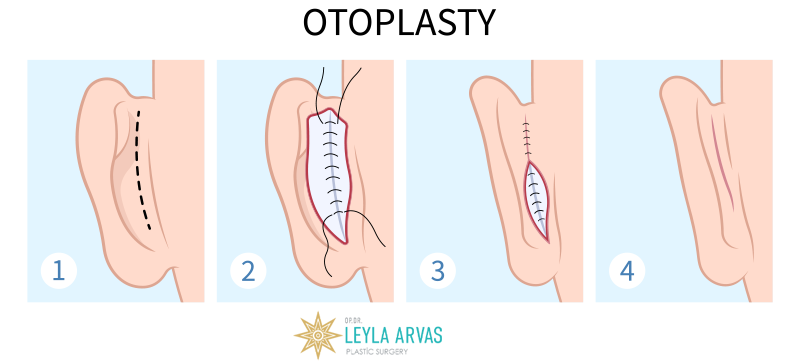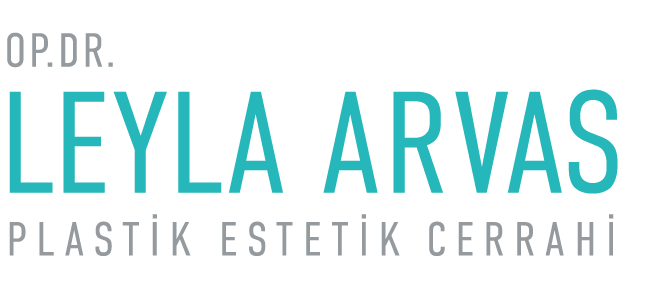Otoplasty is used to reshape or shrink the size of protruding ears. To put it another way, otoplasty involves bringing the ears closer to the skull. The procedure’s goal is to lessen the angle between the ear and the head. The goal of the procedure is to mimic the ear cartilage’s form. The majority of otoplasty patients are kids. The best age range for aesthetic ear surgery is between 4 and 15 years old. However, anyone of any age can have this procedure.
Operation times for otoplasty range from one to five hours. Summer vacation is when business is busiest. There is no need to create a new method to fix lop-earedness because the current one is flawless.
Removal of congenital and acquired abnormalities by aesthetic treatment of the auricles. The degree and quality of sound perception, as well as how well the hearing aids work, are unaffected by otoplasty. It is only done for cosmetic purposes.

What’s The Main Goal Of Otoplasty?
The goal of otoplasty, commonly referred to as ear pinning, is to change the appearance of protruding ears in both children and adults. This treatment may often be done when your child is 8 years old throughout the early years. At that point, the ear is virtually fully developed, and the cartilage’s thickness and consistency are suitable.
Additionally, waiting until your child is old enough to comprehend the therapy and, more crucially, until they are really interested in receiving it, is advised. The experience of being mocked about your child’s ear shape by their friends and being tormented in school can both be avoided with otoplasty surgery.
However, adults can also have this operation. Many young people and teens may discover at some time in their lives that they don’t like how prominent their ears are and that they would like to change the shape of their ears.
Are You A Good Candidate For Otoplasty?
While this surgery is appropriate for people of all ages, it’s crucial to make sure you’re in excellent condition and have reasonable expectations about what it will entail. Before choosing whether the operation is correct for you, it is crucial to speak with your plastic surgeon. If you have any inquiries regarding otoplasty or would want to schedule an appointment, please don’t hesitate to get in touch with our office.
How Does Otoplasty Work?
On the back of the ear, otoplasty is done. Permanent internal sutures are used to shape the ear cartilage while weakening the fold lines that should be there. The earring is then hung backward.
After the intervention, the ears are bandaged for 3 to 7 days. When these bandages are taken off, you can take a shower. Following ear aesthetics, swelling and redness may develop. These grievances will soon come to an end. After an otoplasty, the ear must not be disturbed for three months. Within these three months, the ear will take shape and won’t degrade once again.
The cartilage tissue in youngsters is typically elastic. In these circumstances, the only way to shape the auricle without making an incision is via subcutaneous concealed sutures. When deciding on the approach to use, the doctor’s examination is crucial.
What Happens During Otoplasty?
Surgery is often done under a general anesthetic, however, individuals can also have surgery while sedated and under a local anesthetic. Depending on whether it is for one or both ears, it might take 1.5 to 3 hours. In order to expose or, in some circumstances, remove the cartilage, your surgeon will make a few tiny incisions on the back of your ear. He will then sew the ear back together after folding the cartilage. Your ear will be moved closer to your head as a consequence of this operation, improving the harmony of your face and giving you a more symmetrical appearance.
Although this treatment leaves scars, they are often covered behind the ear. There is also swelling and bruising, which will finally go away over the course of a few weeks.
Otoplasty Recovery Process
The sort of surgery a person has will have some bearing on how quickly they recover. Our doctor will cover the ears with a dressing following surgery. The bandage will be left on for many days, however, the day following surgery, the doctor can decide to briefly take it off to look for a hematoma.
A person might need to wear a safety headband over the ears after having the dressing permanently removed, especially at night. By doing this, the ears can avoid being pushed forward as you sleep.
Possible Risks And Complications Of Otoplasty
Otoplasty includes dangers, much like any other major surgery, including the possibility of hemorrhage, infection, and a negative anesthetic reaction.
Scars are irreversible, although they’ll probably be buried behind your ears. Only if a significant reduction of the concha is necessary to do scars appear at the front of the ear. This could happen as a result of surgery or adjustments made during the recovery period. Additionally, preexisting asymmetry could not be successfully corrected by surgery.
Your ears may be moved during otoplasty, which might lead to temporary numbness or changed feeling. Rarely, these changes are irreversible.
An allergic response to the surgical tape, other products, or drugs used before, during, or after the treatment is conceivable.
It may be necessary to remove stitches that were used to fixate the ear’s new form after they had reached the skin’s surface. The afflicted skin may become infected or inflamed as a result. You could thus require extra surgery.
The abnormal shapes produced by otoplasty might give the appearance that ears are pinched back. This could happen gradually as a result of the cartilage returning to its natural shape, especially in cases where the cartilage is thick and robust. It can also emerge quickly following trauma, before full recovery, and during the early phases of rehabilitation.
Tips For Otoplasty Recovery Process
To give the ears time to recuperate and heal, patients must miss seven days of work or school. There is no need for you to stay in the hospital, so you may relax at home. Your ears will be bandaged after otoplasty for support and protection. Most likely, you’ll experience some discomfort and itching. Take painkillers as your doctor has prescribed. Contact your doctor right away if you take painkillers and your discomfort worsens, especially if the bandages feel constrictive because of swelling.
Avoid sleeping on your side to relieve pressure on your ears. Additionally, avoid rubbing or applying too much pressure to the wounds. Think about putting on button-down shirts or shirts with wide collars.
You should follow your surgeon’s advice and keep the bandage on for the first week following surgery. You will need to wear a headband for protection and support during your rehabilitation for an additional five weeks after the bandage has been taken off.
Stitches typically fall out on their own after two to three weeks. Sometimes, following the treatment, some sutures need to be removed from the doctor’s office. After the bandages are taken off, you should be able to wash your hair and your ears, and after two weeks, you can gradually resume your normal physical activity. For six weeks, you should stay away from contact sports.
Is Otoplasty Procedure A Must-Have?
There is not always a need for treatment. Some anomalies will go away on their own. When a kid is 5–6 years old and 90% of their ear development is complete, it is appropriate to perform an otoplasty. The earliest acceptable age is at this point. After this age, a person can receive therapy at any time.
If the kid receives therapy during the first two to three weeks of life, a non-surgical method called ear molding or splinting may be successful.
Is Otoplasty Painful?
Some surgical procedures don’t require an incision. These could heal more quickly and with a decreased chance of problems.
A needle will be inserted into the cartilage during this surgery to make it more flexible. The ear will then be repaired or reshaped using stitches. In research using a modified version of this method, over 94% of participants reported that their ears looked better.
Additionally, not everyone may be a good candidate for this operation. For instance, a person would require a formal otoplasty if their prominent ears were caused by an excess of cartilage in the concha of the ear. This is due to the fact that a skin incision is required for the surgeon to remove a portion of the cartilage.
Is Otoplasty Worth It?
Otoplasty often has excellent success rates, is safe, and has customer satisfaction levels.
In fact, after having otoplasty to lessen the prominence of their ears, patients felt that their quality of life had improved. It’s critical to have reasonable expectations for what an otoplasty may accomplish. Although it can reduce the prominence of the ears, complete symmetry is not always attainable.
Otoplasty Prices In Turkey
The Ministry of Health cannot legally allow facilities to list pricing on their websites. For this reason, you may contact our polyclinic at 0212 241 46 24 to learn more about the cost of ear aesthetics.
